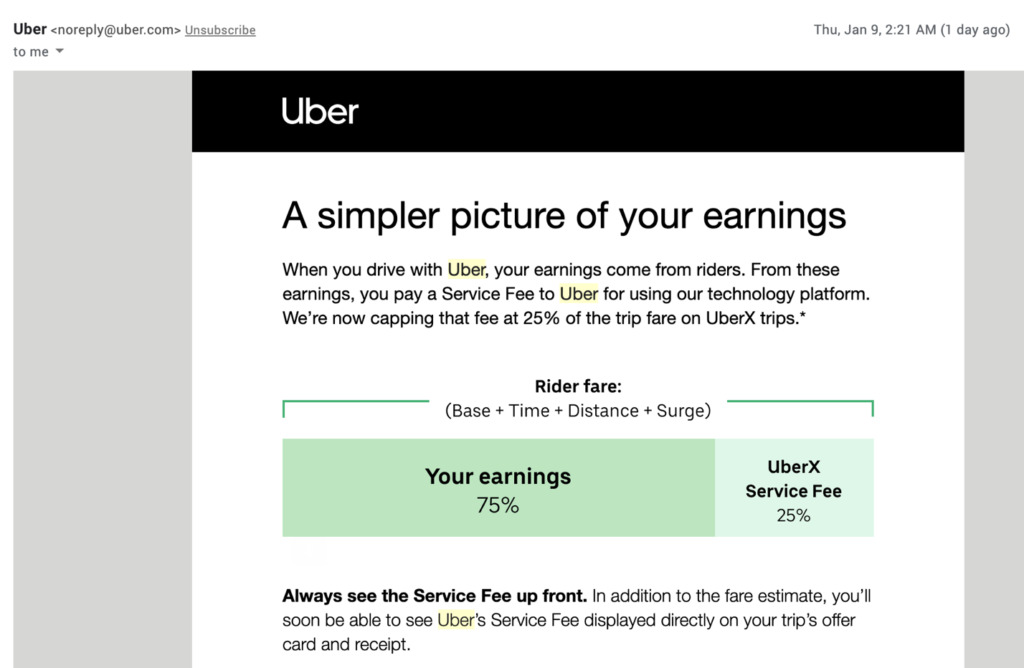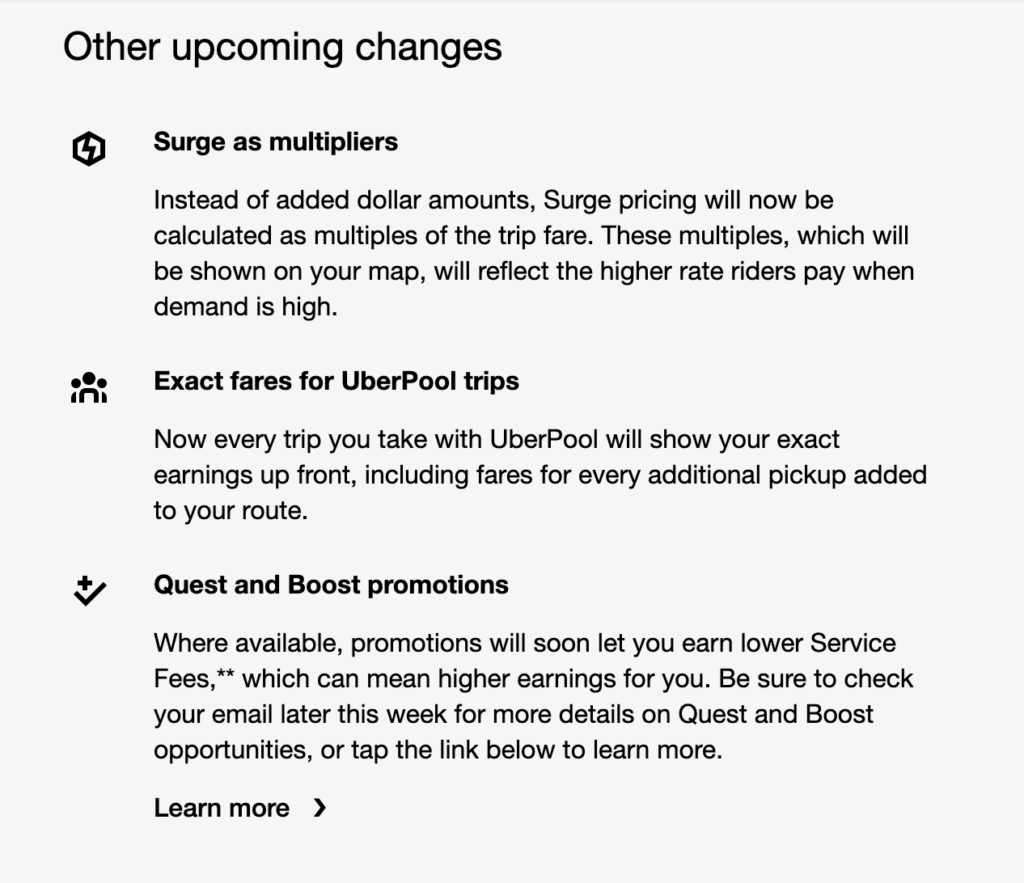Since December, Uber has been making big moves on the driver compensation and information front. Its biggest competitor Lyft, however, has been relatively quiet. Can we expect Lyft to make the same changes as Uber has? Senior RSG contributor Jay Cradeur answers this question below.
Over the past couple of months, Uber has made some remarkable changes to how drivers are paid in California. First, they gave drivers the ability to see where riders are going before they accept a trip. Driver pay is once again a percentage of the rider’s actual fare. Penny surge is gone and multiplier surge is back. The Quest promotion as we have known them, do X number of rides to earn a bonus, has also changed. Consecutive ride bonuses are gone.
Quick links:
- RSG always brings you breaking rideshare news – why not sign up for our newsletter? Sign up for the RSG newsletter today here.
- Miss the latest Uber announcement? Learn about the driver fare card changes here.

In case you missed it, here is what it looked like when Uber sent out their most recent announcement via email.
Why Is Uber Making These Changes For The Drivers?
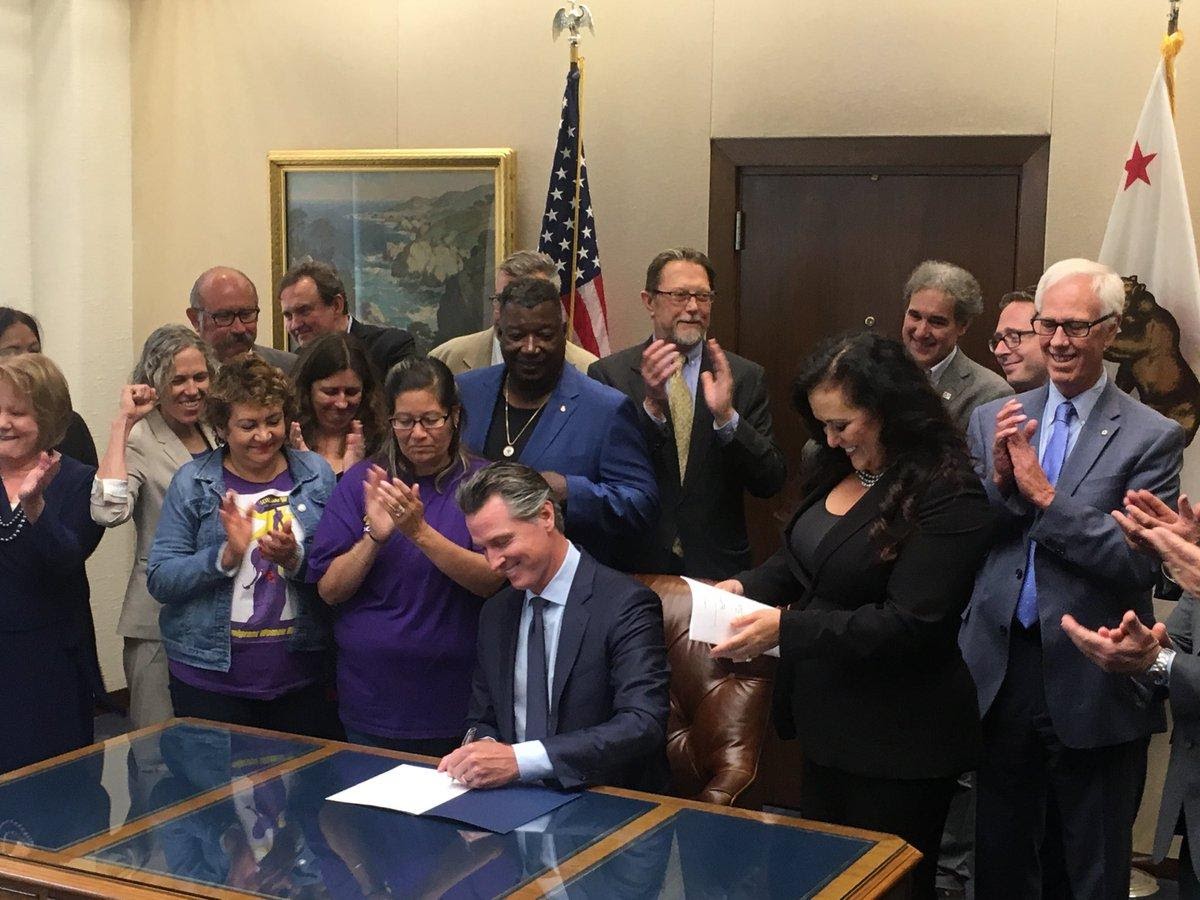
Uber is doing all this in response to AB5 being signed into law by California Governor Gavin Newsome. Effective January 1st, Assembly Bill 5 went into effect. Uber, along with Postmates, has decided to sue the state of California in opposition to the law.
Both Uber and Lyft are ignoring the law and continuing on with business as usual. This is what many of us predicted. However, it is somewhat surprising that Uber has initiated a series of changes to give drivers a bit more control and transparency. Drivers still do not have any mechanism in place to set our own pricing, which is a fundamental tenet of the Independent Contractor status.
AB5 now requires an Independent Contractor to meet all three of the following conditions:
- The worker must be free from the control and direction of the payor in connection with the performance of the work, both under the contract and in fact;
- The worker must perform work that is outside the usual course of the payor’s business; and
- The worker must be customarily engaged in an independently established trade, occupation, or business of the same nature as the work performed by the worker for the payor.
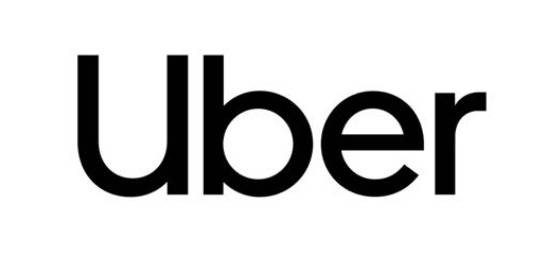
By giving the drivers a bit more transparency, Uber is addressing #1 above. This really does not make us “free from the control and direction of the payor” as all rates are still set by Uber and Lyft. In other words, no matter how well I do my job, no matter how clean I keep my car, no matter how safely I drive, no matter how perfect the music plays to match my passenger’s mood, I still get paid the same as every other driver.
Uber and Lyft also have a real challenge with #2 above, trying to draw a line between what we do as drivers, and what Uber and Lyft do as a company. Since Uber and Lyft are in the transportation business just like taxis and limos, it seems impossible for them to make the argument that drivers are “outside the usual course of the payor’s business.”
So what is Uber doing? They are trying to set up conditions so they can argue in court that AB5 should not apply to rideshare drivers. I don’t see it. I do see Uber’s strong desire to avoid reclassifying drivers from independent contractors to employees.
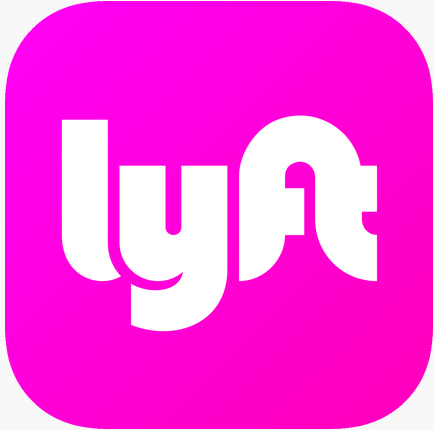
Will Lyft Initiate Similar Driver Changes?
Of course. Over the past two years, we have seen Lyft follow Uber’s lead at least three different times. First, Uber cut per mile rates and increased per minute rates. This was touted as a big improvement for drivers.
However, when we at the Rideshare Guy did a one-week analysis, we found the change lowered driver pay. Shortly thereafter, Lyft made very similar rate changes.
Second, Uber eliminated multiplier surge (driver pay is increased by a surge multiplier) and replaced it with penny surge (‘flat rate surge’, a fixed amount independent of the length of the trip). Following this change, Lyft initiated the Personal Power Zone which essentially does the same things as Uber’s penny surge program.
Third, Uber offered drivers six destination filters. Rather quickly, Uber reverted back to two destination filters per day. Lyft also offered six destination filters and also reverted to two per day.
Given the history of Uber taking the lead and Lyft following, we can expect Lyft to announce similar changes for drivers. However, the main reason I believe Lyft will make a similar adjustment is the same reason Uber did it – AB5. AB5 is forcing the two big rideshare companies to deal with the controlling and domineering nature of their relationship with drivers.
Key Takeaways
Whether you are in support of AB5 or not, you must be happy with the changes that are taking place in response to AB5. I loved the old multiplier surge and I am happy to see it coming back. For drivers to be able to see the destination at the ping is a day many of us never thought would come. But it has.
We are a country of laws. Both Uber and Lyft have been skirting the law and as a result, drivers have suffered. Regardless, AB5 is forcing some changes. Uber moved first, and likely Lyft will move second. Ultimately, this issue of independent contractor versus employee will be determined in court. Until that time, enjoy the positive changes. I expect more will follow.
We’re reaching out to Lyft for comment and will update this article as we hear back.
Do you think Lyft will follow in Lyft’s footsteps in response to AB5, and why do you think they have been relatively quiet since AB5 took effect?
-Jay @ RSG
